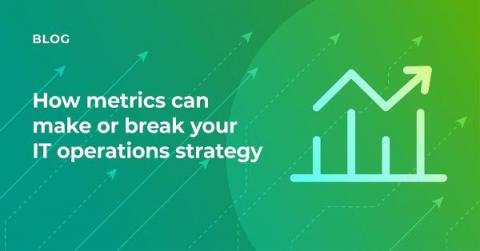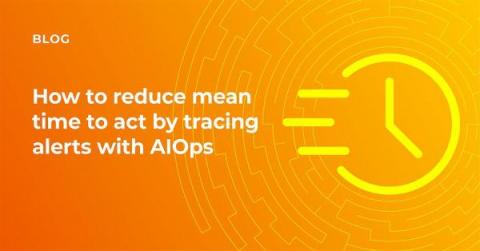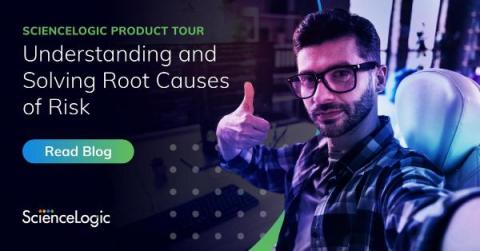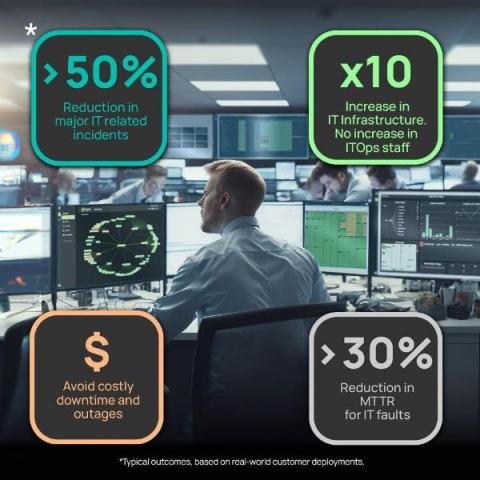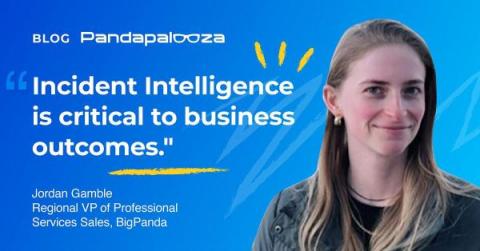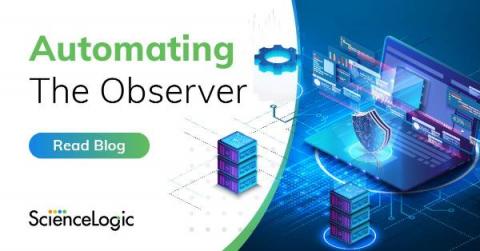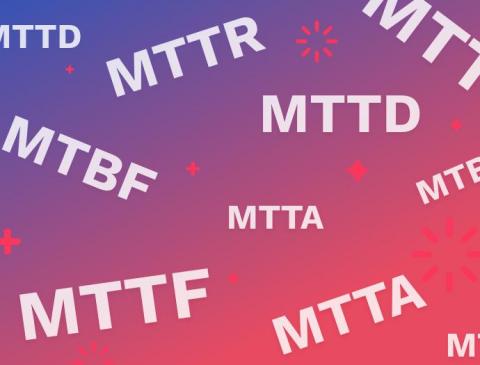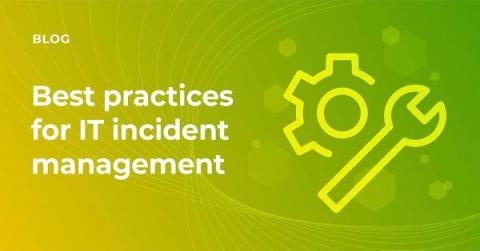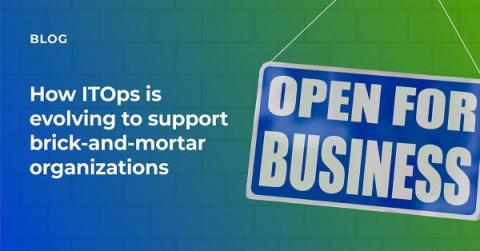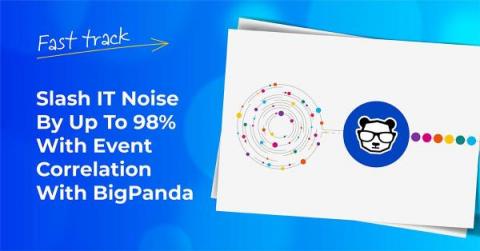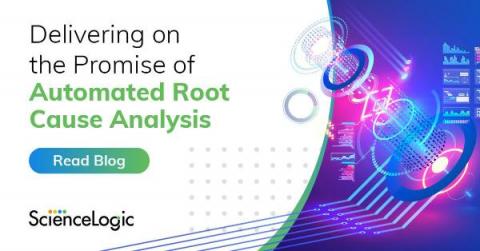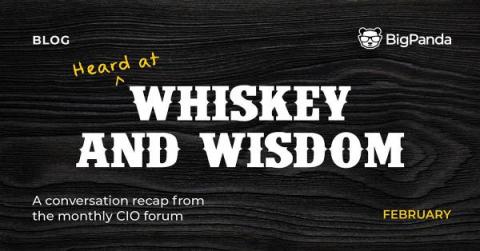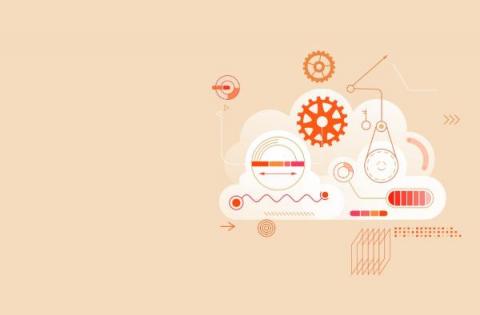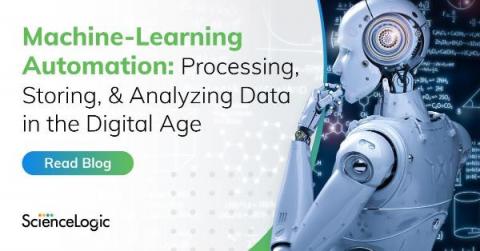Operations | Monitoring | ITSM | DevOps | Cloud
March 2023
Minimize Downtime with Motadata AIOps
How metrics can make or break your IT operations strategy
IT people know that data is king, especially in optimizing IT operations. However, figuring out which metrics to collect and how to collect them can be challenging. IT teams have to factor in what IT directors, team managers, and the people overseeing operations want, what they’re concerned about, and what they consider important.
The 7 IT Automations for Highly Effective Organizations: Resource Provisioning
IT in Motion: Breaking the Code: Uncovering Bias in AI & the Quest for Fairness
TT 06 | How Fujitsu Leverages OpsRamp's AIOps Capabilities
How to reduce mean time to act by tracing alerts with AIOps
This is the story of an insurance company that was getting six million IT alerts every 90 days and how they used BigPanda’s AIOps to reduce it to less than 50,000. Before we get into that though, let’s take a step back. How did we, as an IT sector, get to a place where organizations receive 6,000,000 IT alerts in the first place?
ScienceLogic Product Tour: Understanding-and Solving-Root Causes of Risk
As enterprises grow bigger, more sophisticated, and more complex, it can be difficult to detect signs that network reliability is at risk. That’s why the ScienceLogic SL1 AIOps platform uses advanced, real-time analytics to track behavioral correlation and understand issues affecting infrastructure performance—and solve them quickly.
ScienceLogic Product Tour: Automate your Path to IT Productivity
Today’s enterprises aspire to achieve IT process automation to help manage their infrastructure more efficiently and effectively. An AIOps platform like SL1 from ScienceLogic makes IT automation possible by discovering all devices, configuration, ingesting data from all resources, and creating an operational data lake populated with accurate and timely data. That data ensures the best possible result when automating simple, repetitive tasks.
IT in Motion: Brewing up Organizational Change: It Starts with your Coffee
Top 10 AIOps & Observability Capabilities for the Banking and Finance Sector
Maintaining trust in the business services your customers rely on is everything. With ever-increasing customer expectations and the promise of ‘always-on’ services, poor digital experiences and outages can cause significant harm to your business. The Interlink Software AIOps and Observability platform strengthens IT teams’ capability to deliver more reliable, available digital services and reduce the risk of customer impacting disruption.
ScienceLogic Product Tour: Improving Business Outcomes with Service-Centric Monitoring
Digital business services are spread across on-premises, cloud, and SaaS environments. But assuring great service performance is increasingly difficult. Organizations are shifting from device-based monitoring to business service-based monitoring in order to meet the increasing expectations of end users and the business. And now you can see SL1 Business Services in action—without scheduling a live demo or free trial.
Why an Incident Commander is crucial to ITOps
It may be counterintuitive to tackle a problem without knowing exactly what the problem is, but an incident commander often does just that. In fact Rob Schnepp—founding partner at Blackrock 3, an Alameda, California-based incident management consulting group—says identifying the root cause of an incident is typically secondary to addressing the symptoms.
Take a deep dive into Incident Intelligence
ITOps professionals know that their AI and automation goals can only be achieved with high-quality data. How can you get good-quality data? Incident Intelligence. In this on-demand session from Pandapalooza, our Group Product Manager, Orr Ganani, joined our Regional VP of Professional Services Sales, Jordan Gamble, to discuss Incident Intelligence and its benefits. Read on to learn more about Incident Intelligence from this webinar.
Part 3: Automating the Observer
This is the final blog of a three-part blog series on Observability—the challenges and the solutions.
Top 6 Tips for Improving MTTx
In our research for the inaugural State of Availability Report, we asked 1,900 engineers about mean time to detect (MTTD) and mean time to recovery (MTTR) as two leading incident management Key Performance Indicators (KPIs) strongly associated with availability. We learned that less than 15% of respondents are tracking their MTTD. It takes twice as long to discover an issue than it does to resolve it.
Best practices for IT incident management
Today, many digital technologies in IT can operate with minimal human intervention. However, while they boost productivity and drive growth, any failure or unpredictable behavior can pose a significant challenge for the ITOps and DevOps teams. So, effective IT incident management helps minimize the impact of incidents on business operations and ensures that systems are restored as quickly as possible.
The future of AI
It’s no secret that every ITOps leader can face an ever-increasing amount of alerts. Since the dawn of digital, alerts have served an important purpose. Sometimes all those alerts can become overwhelming noise, and sorting out what is and is not a priority can become challenging. The good news is that artificial intelligence (AI) and machine learning (ML) are adept at processing large data sets in real time, looking for patterns and being able to aid in decision making.
How ITOps is evolving to support brick-and-mortar organizations
To hear Ehab Tarabay explain it, the need for retailers to continue evolving their digital operations is an age-old problem. I recently hosted Tarabay, head of workplace IT services at TMF Group, on our That’s Great IT podcast. As an avid information technology specialist with a track record of more than 20 years in the technology field, he had a unique perspective to share about the shift that’s happening in retail right now.
How to be successful with Unified Analytics
As an ITOps professional, it can be challenging to justify all of your actions to your organization. After talking with many of you, we saw first-hand the pains and gaps around showing the impact of your team and the constant struggle to measure how you’re improving. That’s where Unified Analytics comes into play.
Areas of IT automation focus in 2023 | Resolve Systems
The top 3 barriers to implementing IT automation | Resolve Systems
Fast track video series: Slash IT noise by up to 98% with Alert Correlation with BigPanda
The average organization can have ten or more monitoring or observability tools in their IT stack. These tools keep generating an overwhelming amount of noise. IT Ops, NOC and DevOps teams drown in this noise and can’t focus on real incidents until it’s too late. Your organization’s alerts don’t have to turn into an untameable tsunami with no end in sight—there’s a better way forward.
Delivering on the Promise of Automated Root Cause Analysis
This is part two of a three-part blog series on Observability—the challenges and the solutions.
How ITOps teams are coping with the evolution of cloud management
Breaking down cloud management platforms and hybrid/multicloud management In our recent Whiskey and Wisdom session, we discussed how ITOps teams are coping with the evolution of cloud management. Whiskey and Wisdom is a monthly executive-only forum where IT operations leaders can network independently and discuss high-level AI operations and ITOps strategies with their industry peers.
Key KPIs of AIOps Adoption
ScienceLogic Product Tour: See Across Hybrid IT Environments & Close Visibility Gaps
ScienceLogic’s SL1 is engineered to excel in today’s hybrid IT environments, discovering legacy gear buried in your on-premises data center as well as services and applications that live out in the cloud. SL1 is serious AIOps for IT operations teams that are serious about getting the most out of their investments in IT.
Machine-Learning Automation: Processing, Storing, & Analyzing Data in the Digital Age
The world of software is growing more complex, and simultaneously changing faster than ever before. The simple monolithic applications of recent memory are being replaced by horizontal cloud-native applications. It is no surprise that such applications are more complex and can break into infinitely more ways (and ever new ways). They also generate a lot more data to keep track of. The pressure to move fast means software release cycles have shrunk drastically from months to hours, with constant change being the new normal.
How Splunk Users can Maximize Investment with CloudFabrix Log Intelligence
IT in Motion: The Day After The Layoff
Why you can't have AIOps without Data Engineering
There’s a familiar saying: garbage in, garbage out. For ITOps, this directly applies to data engineering. BigPanda’s Area Vice President of Value and Adoption, Craig Ferrara, says the importance of data hygiene—putting good data in to get good data out—is the core of data engineering, and it requires ITOps to take a look at their data before integrating with an AIOps solution.




